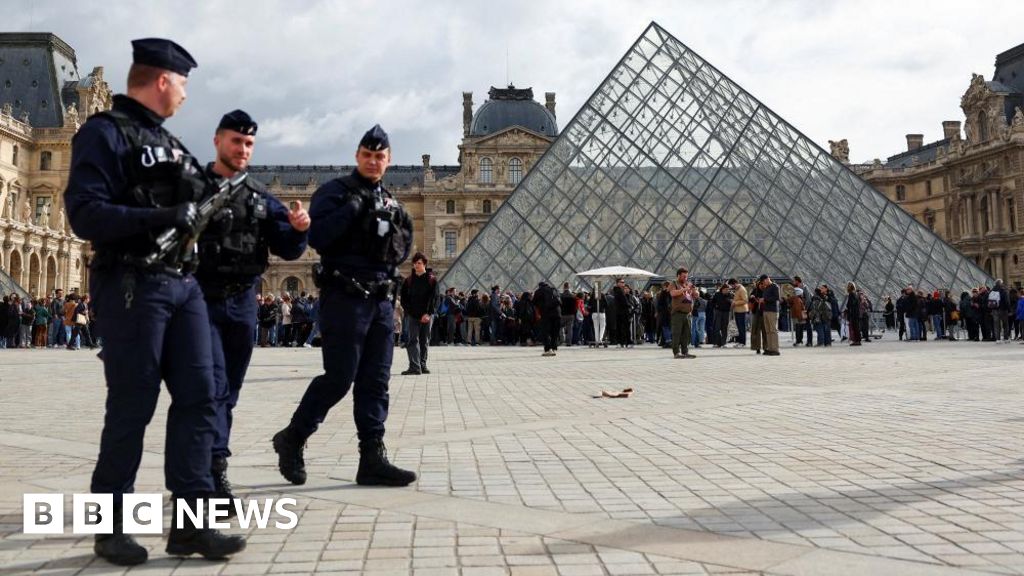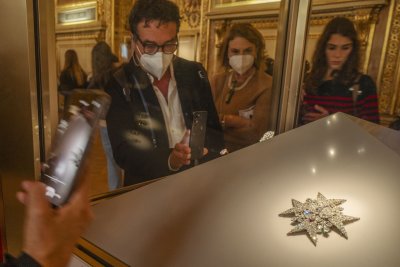Four more arrests made following Louvre jewellery heist
Four more people have been arrested as part of the investigation into last month’s theft of precious jewellery at the Louvre Museum, the Paris prosecutor’s office says.
Two men, aged 38 and 39, and two women, aged 31 and 40, were arrested on Tuesday. They are all from the Paris region.
Among them is thought to be the last member of a four-man gang that allegedly carried out the daylight heist, according to French media. The other three suspected thieves have already been arrested and charged, officials say.
Police now have up to 96 hours to question them. No trace has so far been found of the stolen jewels – worth €88m (£76m; $102m) – which were taken on 19 October.
Four people have already charged over the heist – three men and a woman, who also live in the Paris region.
A 38-year-old woman was charged earlier this month with complicity in organised theft and criminal conspiracy with a view to committing a crime.
Separately, a man, aged 37, was charged with theft and criminal conspiracy.
These two suspects, who have not been named publicly, have denied any involvement.
Ms Beccuau previously told French news agency Franceinfo said the two were in a relationship and had children together, without giving any further details.
Meanwhile, two men were charged with theft and criminal conspiracy in October after officials said they had “partially recognised” their involvement in the heist.
The heist happened when the group of four men used a stolen vehicle-mounted mechanical lift to gain access to the Galerie d’Apollon (Gallery of Apollo) via a balcony close to the River Seine, Beccuau has previously said.
The men used a disc cutter to crack open display cases housing the jewellery.
The thieves were inside for four minutes and made their escape on two scooters waiting outside at 09:38, before switching to cars.
One of the stolen items – a crown – was dropped during the escape but eight other items of jewellery – including an emerald-and-diamond necklace that Napoleon I gave his second wife, Empress Marie-Louise – were taken.
Beccuau has said the heist was carried out by petty criminals rather than organised crime professionals.
Shortly after the theft, it was revealed by the Louvre’s director that the only camera monitoring the Galerie d’Apollon was pointing away from a balcony the thieves climbed over to break in.
The president of the Louvre, Laurence des Cars, has since admitted the museum had failed in its responsibilities, but denied that security had been overlooked – saying that from the time she took office in 2021 she had been warning constantly of the need for more investment.
Since the incident, security measures have been tightened around France’s cultural institutions.
The Louvre has transferred some of its most precious jewels to the Bank of France following the heist.


